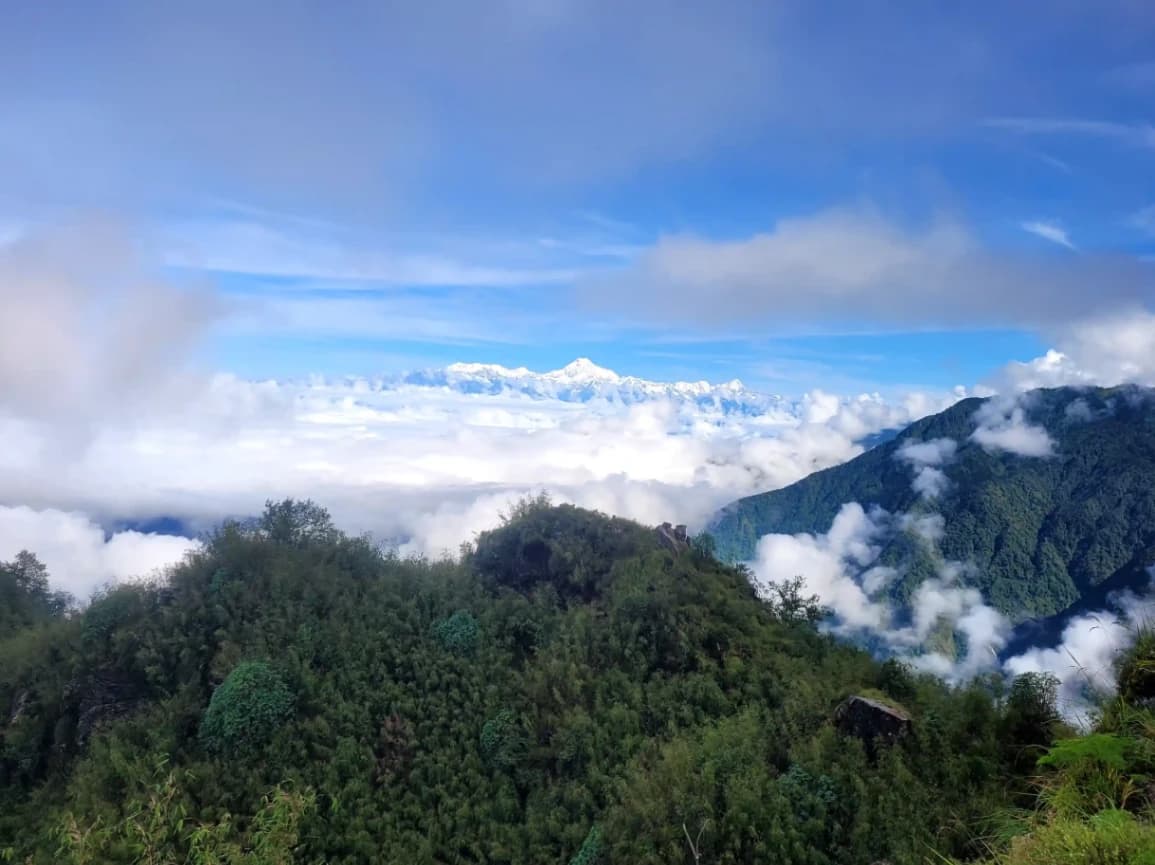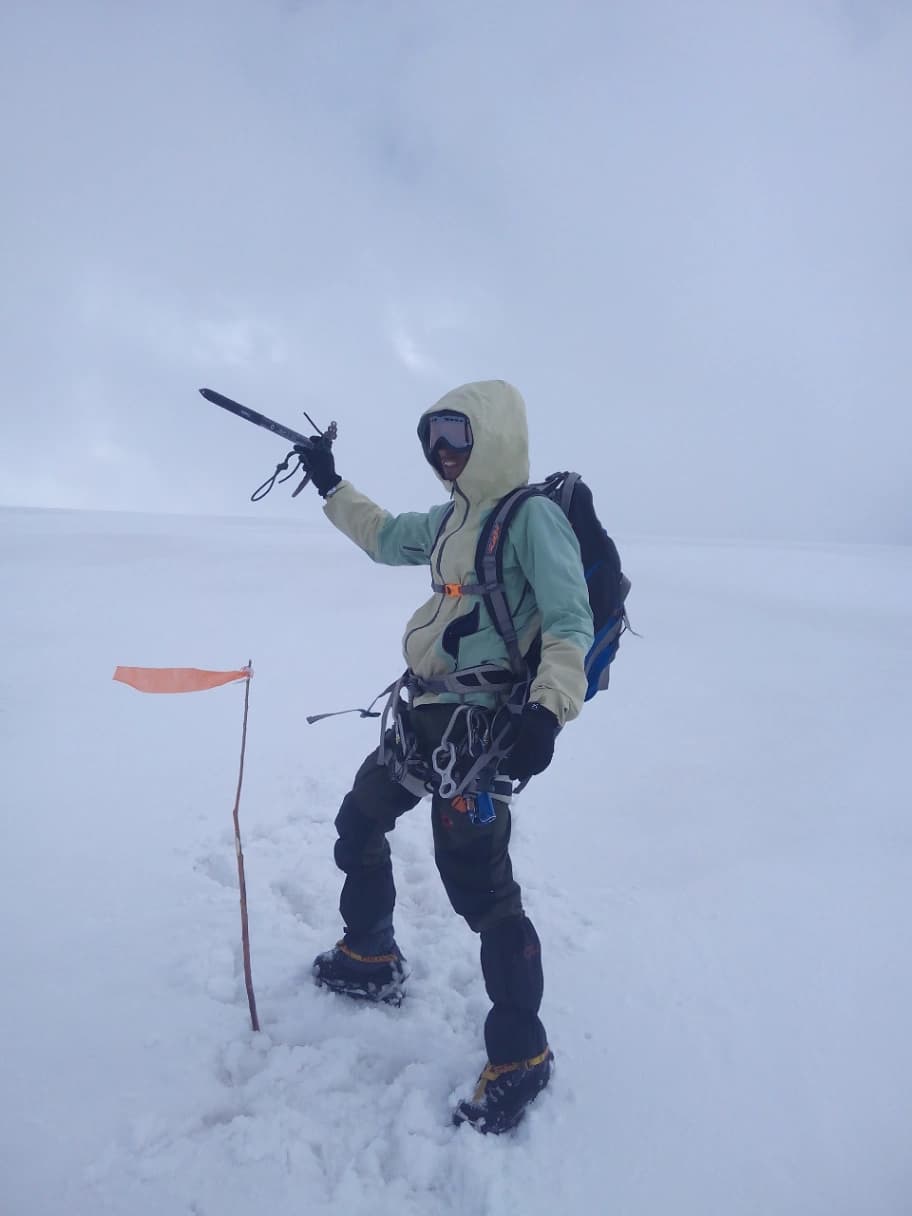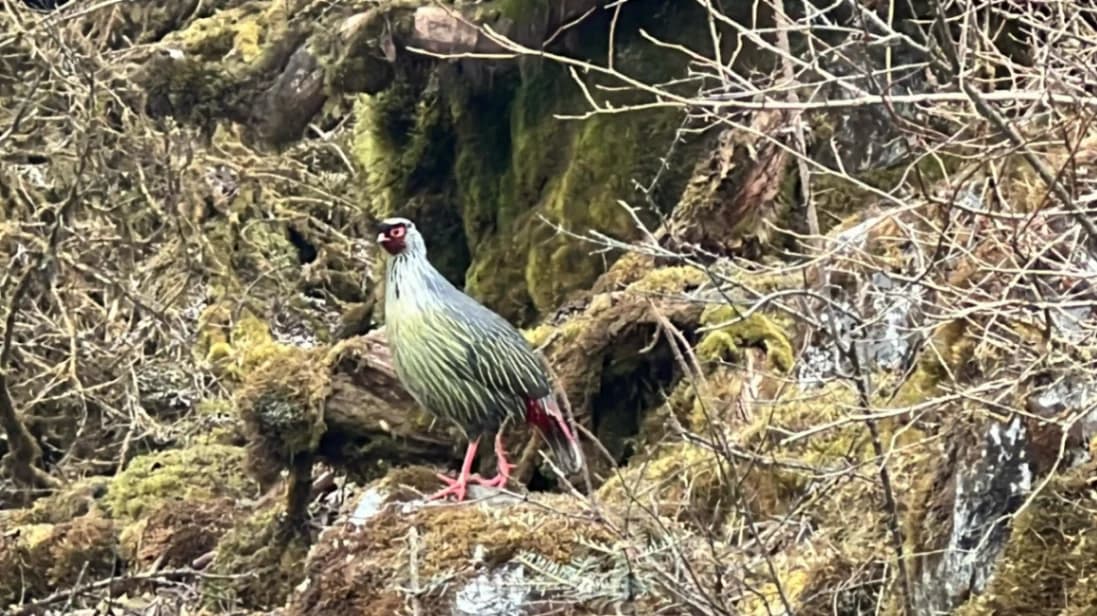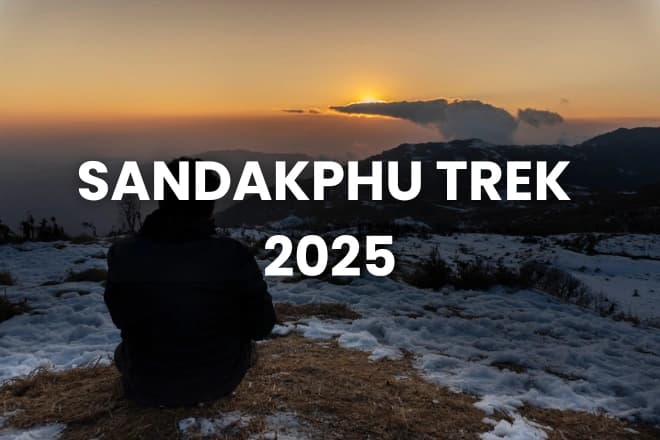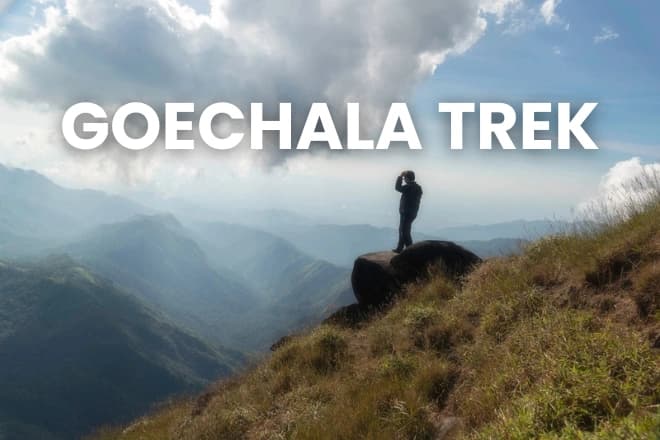The Goechala Trek is a thrilling adventure. It brings you to the foot of the third-highest peak in the world, that of Kanchenjunga.
This stunning ride presents beautiful scenery of the Himalayas. You are also able to enjoy the rich culture of the region.
Our 2025 guide provides in-depth information on the route map of Goechala Trek. It assists in preparing yourself for one incredible adventure.
Whether one is a seasoned trekker or is new to the adventure, this book has it all. This book makes navigation easy on the trek.
The Majestic Goechala Trek: An Overview
The Goechala Trek is one beautiful hike with spectacular views of the Kanchenjunga range. It is in the Himalayas and is enjoyed by adventure enthusiasts and nature enthusiasts.
What Makes Goechala Trek Special
The Goechala Trek is so unique due to its closeness to the third-highest mountain, Kanchenjunga. The trekkers enjoy stunning views of the mountain range comprising Kanchenjunga, as well as Pandim and so many others.
The hike will take you across varied landscapes. You will walk through green meadows and alpine vegetation, so each step is distinct.
Key Highlights and Attractions
The Goechala Trek Route has many attractions that make it unforgettable. Some highlights include:
- The picturesque views of Mount Kanchenjunga and nearby peaks
- Various flora and fauna, comprising some uncommon types of animals and plants
- Cultural encounters, with the chance to engage with the local population
| Attraction | Description |
| Kanchenjunga Views | Panoramic views of the third highest mountain in the world |
| Diverse Landscapes | Lush forests, alpine meadows, and rugged terrains |
| Cultural Experiences | Interaction with local communities and their traditions |
Best Time to Embark on the Goechala Trek
Selecting the right season for the Goechala Trek is crucial to have a wonderful adventure. Success in the trek is highly dependent on the weather, and this varies with season.
The trek is best done in Spring (April-May) and Autumn (September-November). Each season has its own charm, making the trek special.
Spring Season (April-May)
Spring weather is mild and pleasant, ideal for trekking. The paths are less congested, and rhododendron trees are in blossom. This infuses colors in the trek.
Key Highlights of Spring:
- Mild temperatures between 10°C and 15°C in the daytime.
- Rhododendrons in bloom and other flowers
- Fewer trekkers along the trail.
Autumn Season (September-November)
Autumn is also one of the most popular periods to undertake the trek with good weather and blue skies. The temperatures are cool and offer unobstructed views of Kanchenjunga and are ideal for photography.
Key Highlights of Autumn:
- Clear skies and panoramic views of the Himalayas.
- Cool and stable weather, ideal for trekking.
- Well-defined trails due to dry conditions.
| Season | Weather Conditions | Trail Conditions |
| Spring (April-May) | Mild, with temperatures between 10°C to 15°C. | Less crowded, with blooming flora. |
| Autumn (September-November) | Cool and stable, with clear skies. | Dry and well-defined trails. |
Experts say, “The best seasons offer a balance between comfortable trekking conditions and spectacular scenery.” Picking the right season is essential for a memorable Goechala Trek.
Detailed Goechala Trek Route Map
The Goechala Trek is a stunning journey through the Himalayas. It takes trekkers close to Kanchenjunga, the third-highest mountain. This trek offers a unique Himalayan experience.
Starting Point: Yuksom to Sachen
The trek starts in Yuksom, a historic town. From there, trekkers head to Sachen for their first night. This part of the journey shows the beauty of the Himalayan foothills.
Middle Sections: Tshoka to Dzongri to Thansing
After Sachen, the path leads to Tshoka, a village in dense forests. Next, trekkers reach Dzongri, where they see Kanchenjunga for the first time. Then, they go to Thansing for more stunning views. This part of the trek has ups and downs, with the scenery getting more dramatic.
Final Stretch: Lamuney to Goechala Pass
The last part of the trek goes from Lamuney to the Goechala Pass. This is the highest point and the most challenging part. But the views of Kanchenjunga and the Himalayas are breathtaking.
The Goechala Trek route map is essential for this adventure. It outlines the journey and prepares trekkers for the challenges and beauty ahead.
Day-by-Day Goechala Trek Itinerary for 2025
Starting the Goechala Trek is a once-in-a-lifetime adventure. It offers stunning views of Kanchenjunga and a deep dive into local culture. The trek is well-planned to let you enjoy the scenery and prepare for the journey’s challenges.
Days 1-3: Yuksom to Dzongri
The trek begins in Yuksom, a historic town. The first days are for getting used to the high altitude. You’ll walk through green forests and villages. After a few days, you’ll reach Dzongri, a major milestone.
The path from Yuksom to Dzongri is about 14 km long. It takes 6-7 hours to get there. Along the way, you’ll pass through Tshoka, a small village with basic amenities.
Days 4-6: Dzongri to Goechala and Back to Thansing
Next, you’ll head to Goechala Pass. This is the trek’s highlight, with breathtaking views of Kanchenjunga. The pass is a thrilling spot for photographers. After enjoying the views, you’ll start your way back to Thansing.
Days 7-9: Return Journey to Yuksom
The return trip is a chance to reflect on your amazing experiences. You’ll walk through landscapes you’ve seen before, but with a new appreciation. Your journey ends in Yuksom, marking the end of an unforgettable adventure.
| Day | Route | Distance | Duration |
| 1-3 | Yuksom to Dzongri | 14 km | 6-7 hours |
| 4-6 | Dzongri to Goechala and back to Thansing | 12 km | 7-8 hours |
| 7-9 | Thansing to Yuksom | 16 km | 6-7 hours |
Difficulty Level and Physical Preparation
The Goechala Trek is a challenging yet rewarding adventure. It requires careful physical preparation. The trek spans several days, covering rugged terrains, steep ascents, and high altitudes.
Fitness Requirements and Training Plan
A good level of physical fitness is key for the Goechala Trek. Trekkers should do cardiovascular exercises like running, cycling, or swimming for 30 minutes, three to four times a week. Strength training, such as squats and lunges, helps build muscular endurance.
- Cardiovascular exercises: running, cycling, swimming
- Strength training: squats, lunges, leg press
- Flexibility and stretching exercises
Start a training plan 2-3 months before the trek. This helps build endurance and stamina.
Acclimatization Strategy and Altitude Sickness Prevention
Acclimatization is vital to prevent altitude sickness on the Goechala Trek. Gradually ascend to higher altitudes, allowing your body to adapt. Stay hydrated by drinking plenty of water and avoid strenuous activities in the first days.
- Ascend gradually to higher altitudes
- Stay hydrated by drinking plenty of water
- Monitor your body’s response to altitude and rest if necessary
Understanding the goechala trek route map helps plan the itinerary. It ensures proper acclimatization.
Essential Permits and Documentation for Goechala
To have a smooth journey on the Goechala Trek, you need to know about the permits and documents needed. The process is simple but important for a trouble-free trip.
The trek is in the Kanchenjunga National Park, a protected area. You must get the right permits, including the Kanchenjunga National Park permit and the Sikkim Tour permit.
Kanchenjunga National Park and Sikkim Permits
The Kanchenjunga National Park permit is a must for all trekkers. It helps control the number of visitors and protects the park. The Sikkim permit is also needed because the trek goes through Sikkim. Both permits can be gotten through trekking agencies, which take care of the paperwork.
Remember, the permit process asks for your personal details and trek plans. Make sure you have your ID and trek plan ready.
Documentation Process and Timeline
The process starts with registering with a trekking agency. They will help you with the permit application. This includes submitting documents and waiting for the permits.
Timeline: Start the permit application 2-3 weeks early to avoid delays. The time it takes can vary, but with a good agency, it’s usually quick.
Also, be ready for any extra documents like health certificates or emergency contacts. Having everything ready makes your trek worry-free.
Comprehensive Packing List for Goechala Trek
Packing for the Goechala Trek is more than just throwing things in a bag. It’s about planning carefully. A good packing list helps you face the trek’s weather and terrain.
Clothing and Layering Strategy
A good layering strategy is key for comfort on the Goechala Trek. Base layers should wick away moisture to keep you dry. Insulating layers like fleece or down jackets add warmth. A waterproof and breathable outer layer protects you from the weather.
Bring thermal tops and leggings for chilly mornings and evenings. A lightweight, quick-drying outfit is good for warmer days. Remember a warm hat, gloves, and scarf to stay warm.
Trekking Gear and Equipment
Trekking gear is essential for the Goechala Trek’s tough terrain. You’ll need sturdy trekking boots with good grip and trekking poles for stability. A comfortable backpack with a rain cover and a water bottle or hydration bladder are must-haves.
Other must-haves include a headlamp or torch, a first-aid kit, and a portable charger for your devices. A good sleeping bag rated for sub-zero temperatures is needed for camping.
Medical Kit and Personal Essentials
A well-stocked medical kit is vital for the Goechala Trek. Include band-aids, antiseptic wipes, pain relievers, and any personal meds. Don’t forget altitude sickness medication for high altitudes.
Personal items like sunscreen, lip balm, and a water purification system or tablets are also key. As a seasoned trekker says, “The right preparation can make all the difference between a good trek and a great one.”
Accommodation and Food During the Trek
The Goechala Trek has many places to stay, like teahouses and campsites. These spots are simple but meet most trekkers’ needs.
Teahouses, Camping Sites, and Facilities
Teahouses are the main places to stay on the Goechala Trek. They have shared or dorm rooms. You can also camp at some spots for a closer feel to nature. The facilities are basic, with shared toilets and places to wash.
Here’s what you can expect at teahouses and campsites:
| Accommodation Type | Facilities | Notable Features |
| Teahouses | Shared rooms, common toilets | Cozy atmosphere, local cuisine |
| Camping Sites | Tent accommodations, basic sanitation | Immersive natural experience |
Food Options and Water Management
Food on the Goechala Trek comes from teahouses. They serve Sikkimese and Nepali dishes. Meals are simple but high in calories to help with trekking. It’s important to manage water well. Use purification methods or buy bottled water to stay healthy.
Photography Tips for Capturing Kanchenjunga
To capture Kanchenjunga’s beauty on the Goechala Trek, you need the right techniques, equipment, and timing. The trek offers many chances to take stunning photos of the mountain. With some knowledge, you can capture its beauty from different viewpoints.
Best Viewpoints and Timing
The Goechala Trek route map shows the best spots to see Kanchenjunga. Dzongri and Thansing are top choices. The best time for photos is early morning or late afternoon, when the light is soft and golden.
It’s also key to check the weather forecast. This way, you can avoid taking photos in harsh or overcast conditions.
Camera Equipment and Settings for Mountain Photography
To get high-quality photos of Kanchenjunga, you need the right camera and settings. A DSLR or mirrorless camera with a good zoom lens is best. A tripod is also essential for keeping the camera steady, even in low light.
For mountain photos, shoot in RAW format and use a low ISO to reduce noise. Bracketing your shots can also help capture the mountain’s vast dynamic range.
Budget Planning and Cost Breakdown for 2025
Planning your budget for the Goechala trek is key. It helps you manage your money well and enjoy your trek more. Knowing your expenses in advance is important.
Trek Package Options and Inclusions
The cost of the Goechala trek changes with the package you pick. Trekking agencies offer different packages. These include:
- Permits and Documentation: Agencies take care of the permits, making it easier for you.
- Accommodation and Meals: You get places to stay and food during the trek.
- Guide and Porter Services: Guides and porters are often needed. Packages may cover their costs and accommodations.
- Transportation: Some packages include transport to the trek start.
It’s important to know what’s included in your package. This helps avoid surprises.
Additional Expenses and Money-Saving Tips
While packages cover a lot, there are extra costs:
- Travel Insurance: Get insurance that covers trekking.
- Personal Gear: You might need to buy or rent gear like trekking poles or sleeping bags.
- Tips and Miscellaneous: Tips for your guides and porters, and money for souvenirs or unexpected things.
To save, trek in the off-season. Book early and plan your meals if you can.
Conclusion: Embracing the Goechala Experience
The Goechala trek is more than a journey; it’s a deep connection with Kanchenjunga’s beauty. Planning your 2025 trip means knowing the goechala trek route map well. This ensures a smooth and enjoyable adventure.
From lush forests in Yuksom to stunning Goechala Pass views, the trek is varied. With a detailed plan and the right gear, you’ll fully experience the trek’s essence.
Whether you’re experienced or new to high-altitude treks, Goechala offers an unforgettable journey. So, pack your bags, grab your trekking poles, and get ready to see the Himalayas’ grandeur on the Goechala trek.
FAQ
What is the best time to undertake the Goechala Trek?
The best times for the Goechala Trek are spring (April-May) and autumn (September-November). The weather is great, and Kanchenjunga views are stunning.
What is the difficulty level of the Goechala Trek?
The Goechala Trek is moderately hard. You need to be fit and get used to high altitudes.
What are the essential permits required for the Goechala Trek?
You need a Kanchenjunga National Park permit and a Sikkim permit. Get them through a registered trekking agency.
What should I pack for the Goechala Trek?
Pack warm clothes, trekking gear, a medical kit, and personal items. Don’t forget a water bottle, sunscreen, and a first-aid kit.
What are the accommodation options during the Goechala Trek?
You can stay in teahouses or camp. They offer basic needs like food, shelter, and toilets.
How can I capture the best photos of Kanchenjunga during the Goechala Trek?
Visit the best viewpoints during the golden hour. Use a good camera and wait for the perfect shot.
What is the Goechala Trek route map?
The trek starts in Yuksom. It goes through Sachen, Tshoka, Dzongri, Thansing, and Lamuney to Goechala Pass.
How do I plan my budget for the Goechala Trek?
Plan your budget by considering trek packages, permits, and other costs. Look for ways to save, like group tours or early bookings.






